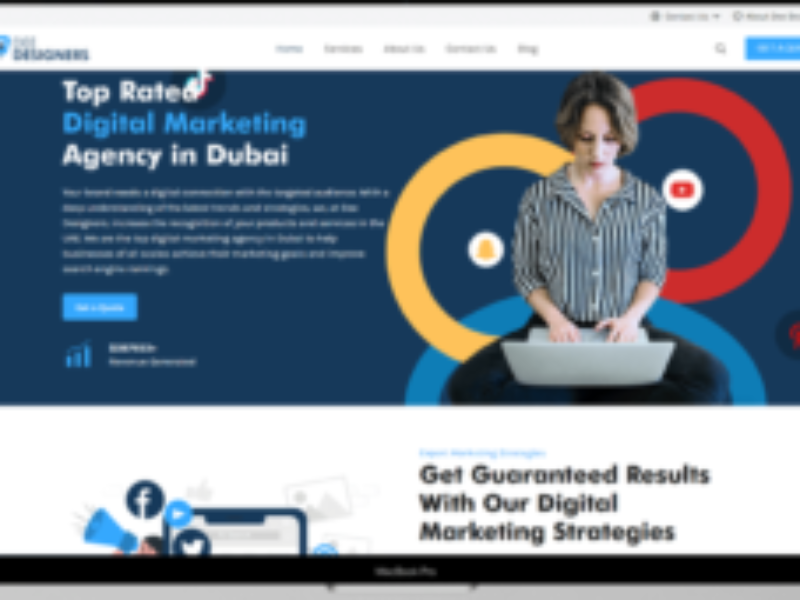10 Key Elements of Using Oriented Website Design and Development in Dubai, Abu Dhabi, United Arabs Emirates
In the ever-evolving digital landscape, having an oriented website design is not just an option; it’s a necessity. This article will delve into the ten key elements that make a website truly oriented, ensuring a seamless user experience and optimal performance in search engine rankings.
A. Definition of Oriented Website Design
Oriented website design dubai refers to the strategic planning and execution of a website’s layout and features with the primary focus on enhancing user experience and achieving specific business goals. It goes beyond aesthetics, prioritizing functionality, accessibility, and user engagement.
B. Importance in the Digital Landscape
In an era where online presence is paramount, having a website that is oriented becomes a competitive advantage. Users expect a smooth and intuitive experience, and search engines reward websites that meet these expectations. Now, let’s explore the ten key elements that contribute to a well-oriented website design.
II. User-Centric Navigation
A. Clear Menu Structure
A well-defined menu structure ensures that visitors can quickly find what they are looking for. It should be logically organized, providing easy access to essential pages.
B. Intuitive User Journey
Creating an intuitive user journey involves anticipating user behavior and designing the website’s flow accordingly. From landing on the homepage to completing a desired action, the navigation should be seamless.
III. Responsive Design
A. Mobile Optimization
With the increasing use of smartphones, a mobile-optimized design is crucial. It ensures that the website functions seamlessly on various devices, contributing to a positive user experience.
B. Cross-Browser Compatibility
A website should look and function consistently across different browsers. Cross-browser compatibility ensures that users have a uniform experience, regardless of their choice of browser.
IV. Engaging Visuals
A. High-Quality Images
Visually appealing images capture attention and convey a brand’s message effectively. High-quality, relevant visuals contribute to the overall aesthetics of the website.
B. Thoughtful Use of Graphics
Graphics, when used thoughtfully, enhance the user experience. From icons to infographics, incorporating visuals can make complex information digestible and engaging.
V. Consistent Branding
A. Unified Color Palette
A consistent color palette strengthens brand identity. It creates a visual connection between different parts of the website, reinforcing the brand image.
B. Cohesive Font Usage
The use of consistent fonts across the website maintains readability and contributes to a professional and cohesive design.
VI. Fast Loading Speed
A. Importance for User Experience
A slow-loading website can drive visitors away. Fast loading speed is not only vital for user satisfaction but also a factor considered by search engines in ranking algorithms.
B. Optimization Techniques
Optimizing images, leveraging browser caching, and minimizing HTTP requests are among the techniques used to enhance loading speed.
VII. SEO-Friendly Elements
A. Keyword Integration
Strategic integration of relevant keywords throughout the website’s content helps improve search engine visibility.
B. Descriptive Meta Tags
Well-crafted meta tags provide concise and accurate information about the content, enticing users to click through from search engine results.
VIII. Social Media Integration
A. Seamless Sharing Options
Integrating social media sharing options facilitates content distribution, increasing the website’s reach and engagement.
B. Embedding Social Feeds
Displaying social media feeds directly on the website keeps content fresh and encourages visitors to connect with the brand on various platforms.
IX. Accessibility
A. Inclusive Design Practices
An oriented website design considers accessibility for all users, including those with disabilities. This involves using inclusive design practices and adhering to accessibility standards.
B. Compliance with Web Content Accessibility Guidelines (WCAG)
Ensuring compliance with WCAG standards makes the website accessible to a broader audience and aligns with ethical and legal considerations.
X. Data Security
A. SSL Certification
Securing user data is paramount. SSL certification encrypts data transmitted between the user’s browser and the website, establishing a secure connection.
B. Secure Payment Gateways
For e-commerce websites, implementing secure payment gateways safeguards sensitive financial information, building trust with users.
XI. Call-to-Action (CTA) Placement
A. Strategic Positioning
Well-placed CTAs guide users toward desired actions, whether it’s making a purchase, subscribing, or filling out a form.
B. Compelling CTA Copy
The copy accompanying CTAs should be compelling and clear, encouraging users to take the next step.
XII. Analytics Integration
A. Monitoring User Behavior
Utilizing analytics tools helps track user behavior, enabling continuous improvement based on data-driven insights.
B. Continuous Improvement
Regularly analyzing analytics data allows for iterative improvements, ensuring the website evolves to meet changing user needs and preferences.
XIII. Content Readability
A. Concise and Scannable Content
Readable content is crucial. Break down information into digestible chunks, use headings and bullet points, and maintain a conversational tone.
B. Effective Typography
Choosing readable fonts and appropriate font sizes enhances content readability on various devices.
XIV. Regular Maintenance
A. Importance of Updates
Regular updates, including content, plugins, and security patches, are essential for maintaining optimal website performance.
